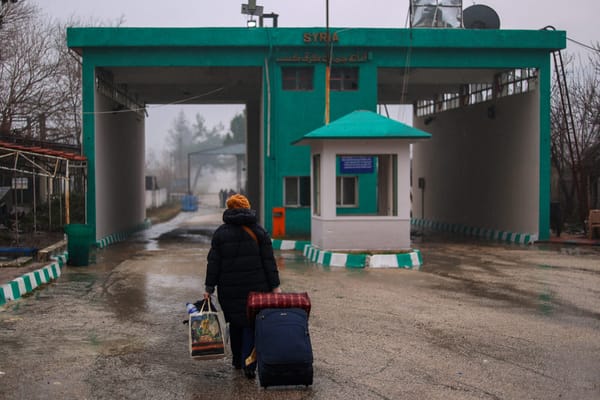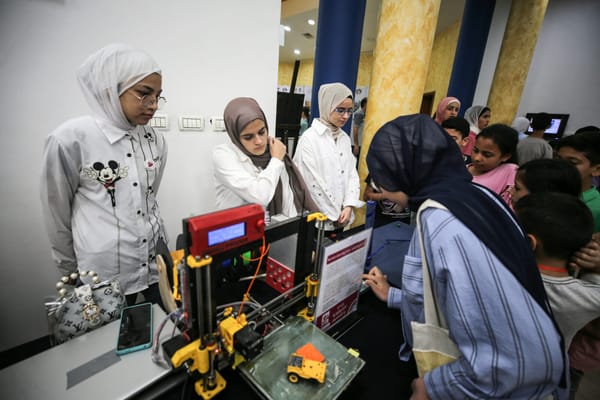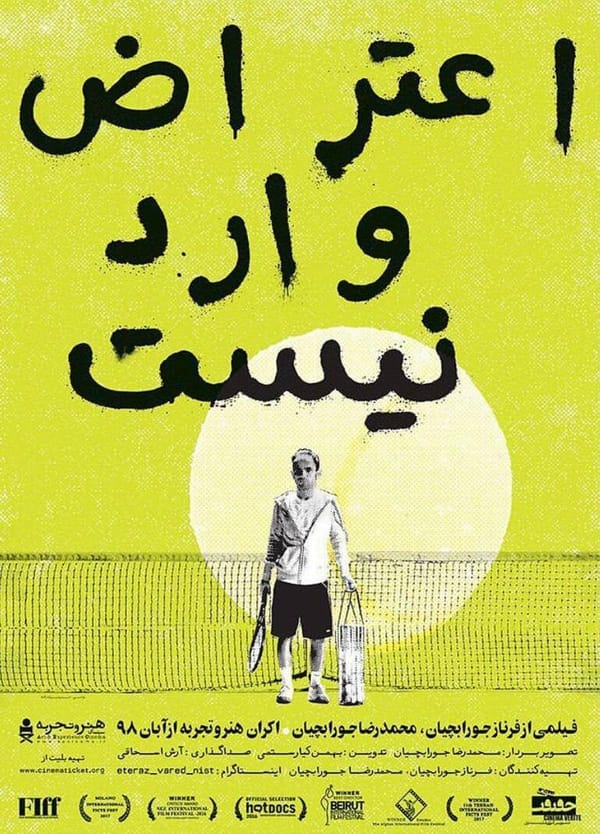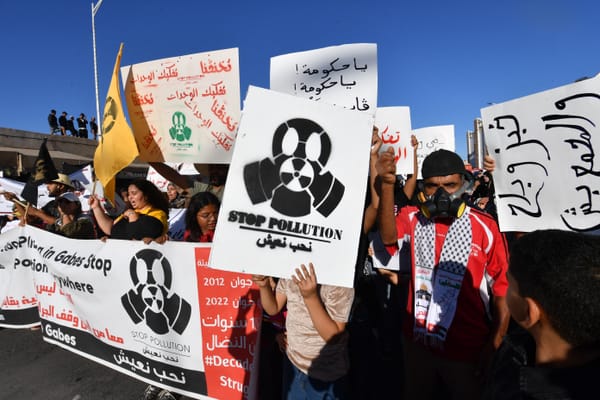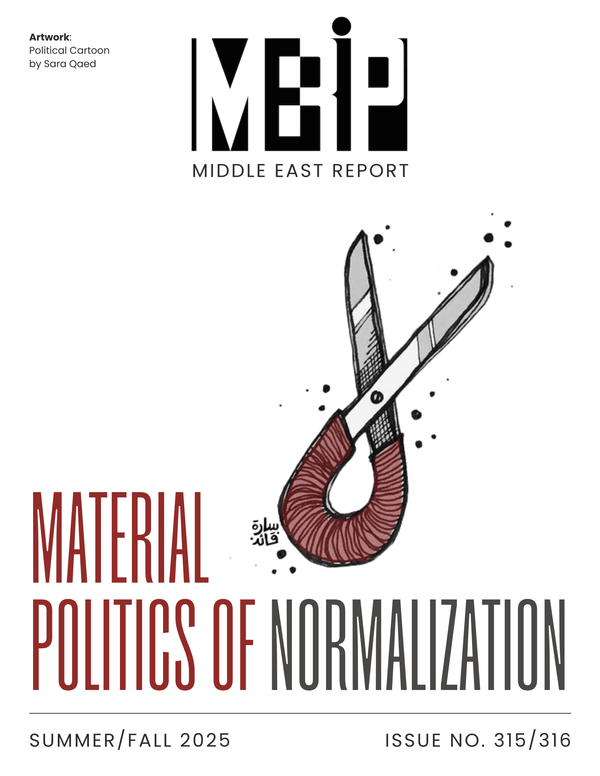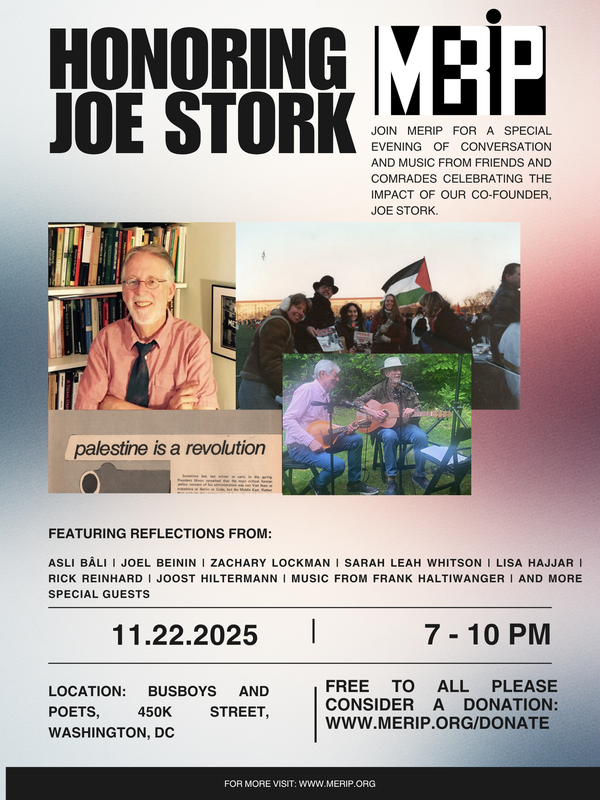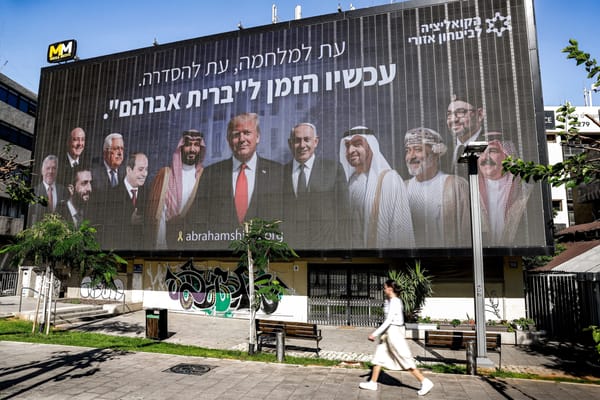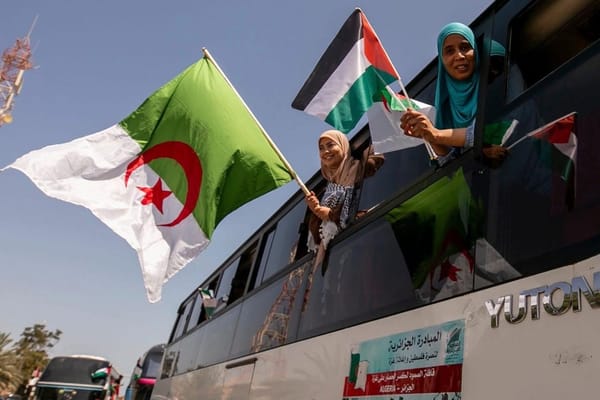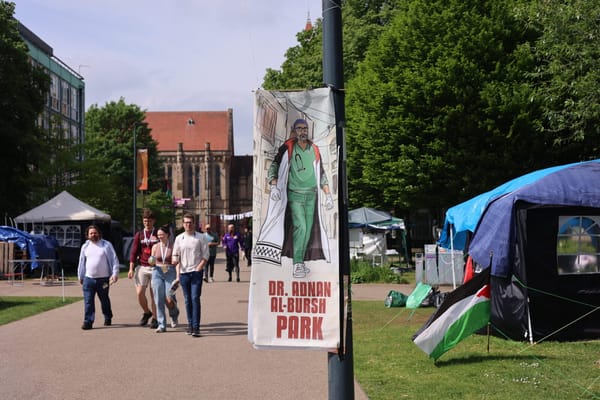A Note on the Cover Image
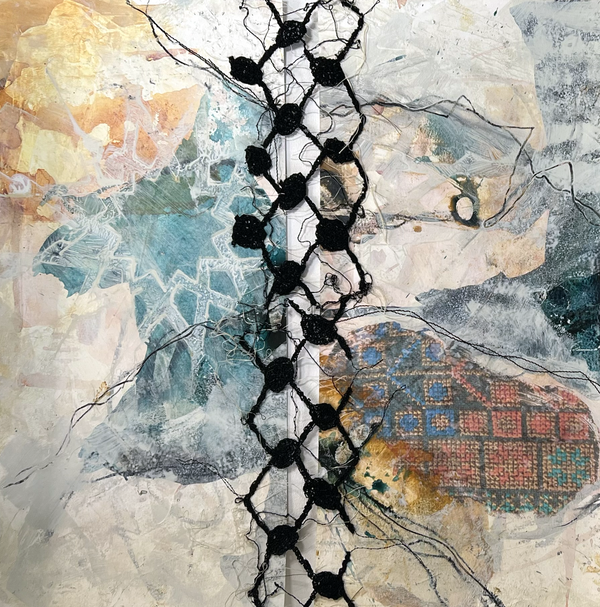

While MER issue 313 grapples with the question of resistance to Israeli-US domination in light of a weakened regional axis, its cover centers the intimate, everyday textures of life that continue to animate the struggle for liberation.

Samar Hussaini’s “Inherited Memories” works through media of acrylic, ink, graphite, image transfer and embroidery to draw forward themes of heritage, identity and resistance. Hussaini, a first-generation Palestinian American artist, uses free-hand machine embroidery, multimedia painting and sculptural forms to explore the strength of cultural memory amid displacement and loss.
Family, identity and heritage color the threads of Hussaini’s artwork, in which two halves are connected by the pattern of a keffiyeh. As Hussaini explains,
At the heart of the piece is free-hand machine embroidery, stitched on water-soluble fabric. Once the fabric dissolves, only the intricate embroidery remains—a metaphor for the enduring strength of Palestinian culture despite efforts at erasure. The embroidery’s design is inspired by the fishing nets of Gaza, a symbolic element from the keffiyeh that represents resilience, sustenance and the enduring connection to the land and sea.
Worn by Palestinians and supporters of the liberation movement around the globe, the keffiyeh is an enduring symbol of Palestinian identity and a material marker of the struggle that moves millions to action. A patch of embroidery (tatreez) on the right, stitched by the artist’s grandmother, tells stories of land, resistance and belonging that can be worn upon the body, carrying messages across generations, borders and communities. Finally, the geometric star pattern, seen in the upper left, appears in various ornamental incarnations in architecture, pottery and tiles around the Middle East and North Africa, as well as in Spain, gesturing to a deeper shared history across the Mediterranean. These cultural forms connect people across space and time in ways that resist erasure.
By reconstructing them, Hussaini “invites viewers to consider the stories embedded in cultural artifacts and how they survive through creative reimagining.” The work reminds readers of MER that resistance is multi-faceted and ongoing, never defined by the forces that seek to constrain and destroy it.
Read the first article in MER issue 313 “Resistance—The Axis and Beyond.”
